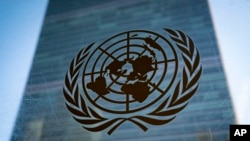ລາຍງານທີ່ເຜີຍແຜ່ໂດຍອົງການແມ່ຍິງຂອງສະຫະປະຊາຊາດໃນວັນພະຫັດມື້ນີ້ລະບຸວ່າ ສິດທິຂອງແມ່ຍິງໄດ້ຖົດຖອຍລົງເມື່ອປີທີ່ຜ່ານມາຢູ່ນຶ່ງໃນສີ່ຂອງປະເທດຕ່າງໆທົ່ວໂລກ ເນື່ອງຈາກປັດໄຈຕ່າງໆຕັ້ງແຕ່ການປ່ຽນແປງຂອງສະພາບອາກາດໄປຈົນເຖິງການຖົດຖອຍຂອງປະຊາທິປະໄຕ.
ລາຍງານລະບຸວ່າ “ການອ່ອນແອລົງຂອງສະຖາບັນປະຊາທິປະໄຕ ແມ່ນໄດ້ໄປພ້ອມໆກັບການຕອບໂຕ້ຕໍ່ຄວາມເທົ່າທຽມທາງເພດ” ແລະ ເສີມວ່າ “ຜູ້ທີ່ຕໍ່ຕ້ານສິດທິມະນຸດແມ່ນກຳລັງທຳລາຍຄວາມເຫັນພ້ອມກັນ ກ່ຽວກັບ ບັນຫາສິດທິຂອງແມ່ຍິງຕ່າງໆຢ່າງຂະຫຍັນຂັນແຂງ.”
ລາຍງານສືບຕໍ່ກ່າວ ໂດຍອ້າງເຖິງເອກະສານຈາກກອງປະຊຸມໂລກ ກ່ຽວກັບ ແມ່ຍິງໃນປີ 1995 ວ່າ “ເກືອບນຶ່ງສ່ວນສີ່ຂອງປະເທດຕ່າງໆລາຍງານວ່າ ການຕອບໂຕ້ຕໍ່ຄວາມເທົ່າທຽມທາງເພດກຳລັງຂັດຂວາງການປະຕິບັດການຂອງຖະແຫຼງການປັກກິ່ງເພື່ອການດຳເນີນການ ຫຼື Beijing Platform for Action.”
ໃນຊ່ວງເວລາ 30 ປີນັບຕັ້ງແຕ່ກອງປະຊຸມນັ້ນ, ອົງການສະຫະປະຊາຊາດກ່າວວ່າ ຄວາມກ້າວໜ້າແມ່ນມີທັງດີ ແລະ ບໍ່ດີ.
ໃນສະພາແຫ່ງຊາດທົ່ວໂລກ, ຈຳນວນຜູ້ແທນແມ່ຍິງແມ່ນໄດ້ເພີ່ມຂຶ້ນເປັນສອງເທົ່ານັບຕັ້ງແຕ່ປີ 1995, ແຕ່ຜູ້ຊາຍຍັງປະກອບເປັນປະມານສາມສ່ວນສີ່ໃນບັນດາສະມາຊິກສະພາ.
ຕົວເລກຂອງແມ່ຍິງທີ່ໄດ້ຮັບຜົນປະໂຫຍດການປົກປ້ອງໃນສັງຄົມໄດ້ເພີ່ມຂຶ້ນນຶ່ງສ່ວນສາມ ລະຫວ່າງປີ 2010 ແລະ 2023, ແນວໃດກໍຕາມແມ່ຍິງ ແລະ ເດັກຍິງສອງພັນລ້ານຄົນແມ່ນຍັງອາໄສຢູ່ໃນສະຖານທີ່ຕ່າງທີ່ບໍ່ມີການປົກປ້ອງ.
ຊ່ອງຫວ່າງການຈ້າງງານລະຫວ່າງເພດ “ແມ່ນໄດ້ຢຸດເຄື່ອນໄຫວມາຫຼາຍທົດສະວັດ” ຜູ້ຍິງອາຍຸລະຫວ່າງ 25 ເຖິງ 54 ປີ ຈຳນວນ 60 ເປີເຊັນແມ່ນມີວຽກງານທີ່ໄດ້ຮັບຄ່າຈ້າງ, ເມື່ອທຽບກັບຜູ້ຊາຍໃນກຸ່ມປະຊາກອນດຽວກັນທີ່ມີ 92 ເປີເຊັນ.
ລາຍງານນັ້ນໄດ້ອ້າງເຖິງໂຣກລະບາດ ໂຄວິດ-19, ຄວາມຂັດແຍ້ງໃນໂລກ, ສະພາບອາກາດປ່ຽນແປງ ແລະ ເທັກໂນໂລຈີທີ່ກຳລັງກຳເນີດຂຶ້ນ, ເຊັ່ນປັນຍາປະດິດ ຫຼື AI, ລ້ວນແຕ່ເປັນໄພຂົ່ມຂູ່ໃໝ່ທີ່ອາດຈະເກີດຂຶ້ນຕໍ່ຄວາມເທົ່າທຽມທາງເພດ.
ອ່ານຂ່າວນີ້ເປັນພາສາອັງກິດ
Women's rights regressed last year in a quarter of countries around the world, according to a report published by UN Women on Thursday, due to factors ranging from climate change to democratic backsliding.
"The weakening of democratic institutions has gone hand in hand with backlash on gender equality," the report said, adding that "anti-rights actors are actively undermining long-standing consensus on key women's rights issues."
"Almost one-quarter of countries reported that backlash on gender equality is hampering implementation of the Beijing Platform for Action," the report continued, referring to the document from the 1995 World Conference on Women.
In the 30 years since the conference, the UN said that progress has been mixed.
In parliaments around the world, female representation has more than doubled since 1995, but men still comprise about three-quarters of parliamentarians.
The number of women with social protection benefits increased by a third between 2010 and 2023, though two billion women and girls still live in places without such protections.
Gender employment gaps "have stagnated for decades." Sixty-three percent of women between the ages of 25 and 54 have paid employment, compared to 92 percent of men in the same demographic.
The report cites the Covid-19 pandemic, global conflicts, climate change and emerging technologies, such as artificial intelligence (AI), as all new potential threats to gender equality.






ຟໍຣັມສະແດງຄວາມຄິດເຫັນ